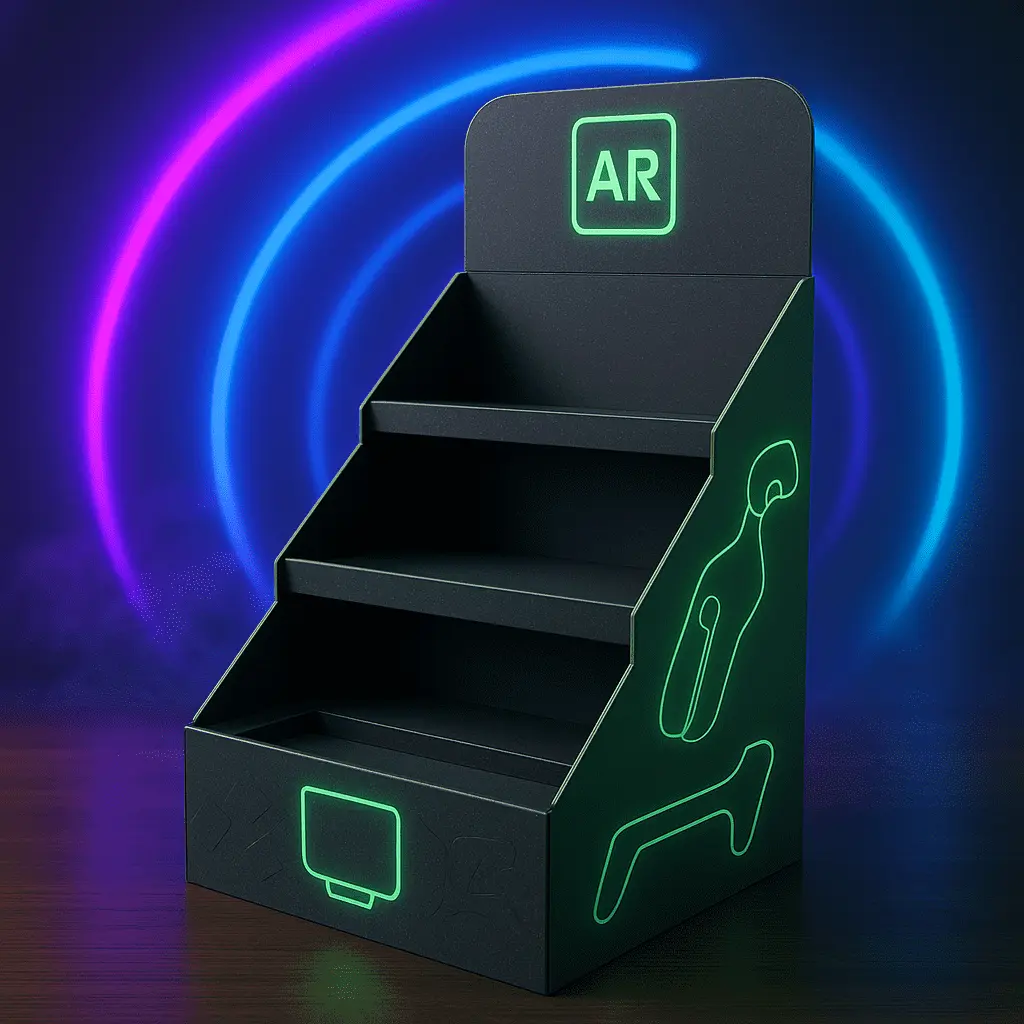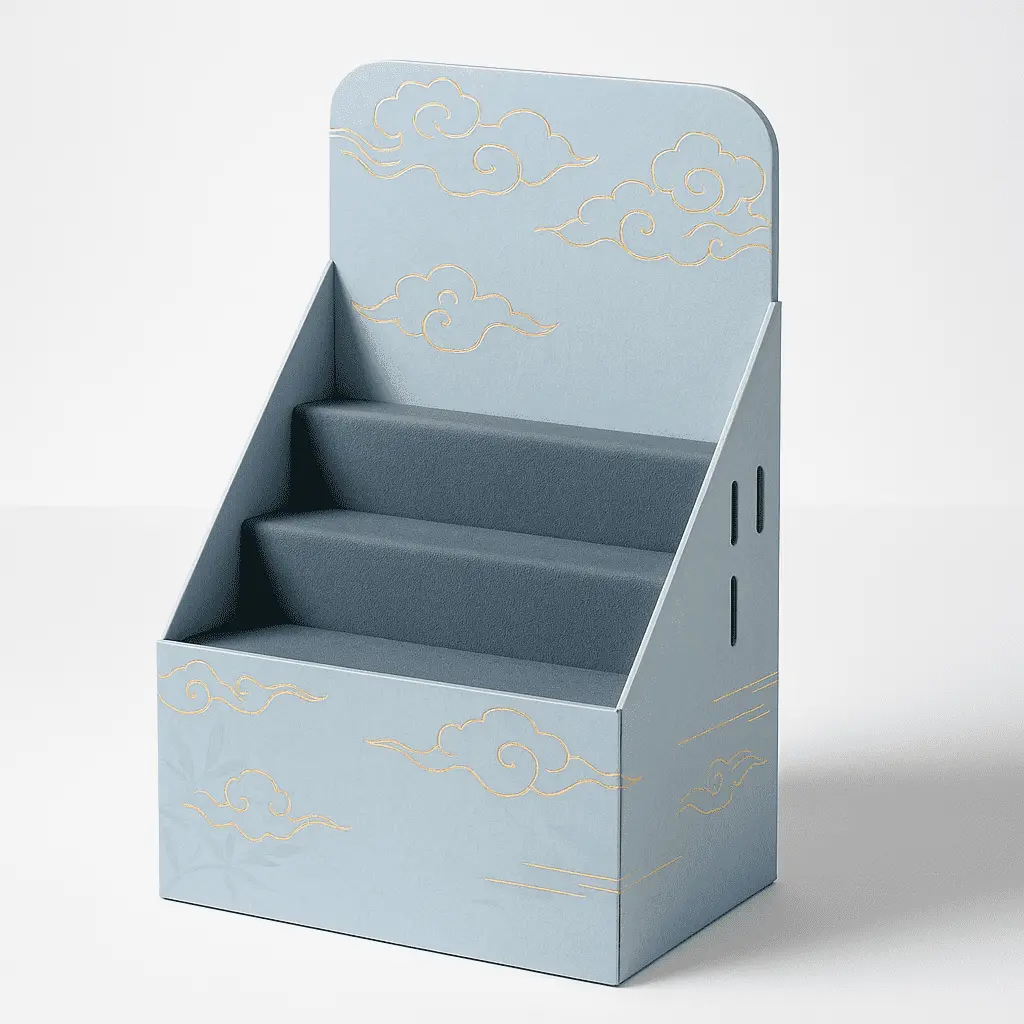How PDQ Displays Handle Multi-Product Branding?
PDQ displays, or Point of Purchase Quick displays, are invaluable tools for handling multi-product branding in retail environments. These versatile fixtures excel at showcasing various items from different brands cohesively, maximizing visibility and consumer engagement. By strategically arranging products, PDQ displays create a visually appealing presentation that draws shoppers' attention and encourages impulse purchases. The modular nature of these displays allows for easy customization, enabling retailers to feature multiple brands side-by-side while maintaining each product's unique identity. This approach not only optimizes shelf space but also enhances the overall shopping experience, making PDQ displays an essential asset for effective multi-product branding strategies in today's competitive retail landscape.

Maximizing Visual Impact with PDQ Displays
Design Elements that Capture Attention
PDQ displays are masterful at capturing consumer attention through their eye-catching design elements. The use of vibrant colors, bold graphics, and innovative shapes helps these displays stand out in bustling retail environments. Clever use of lighting can further enhance the visual appeal, drawing the eye to specific products or brand messages. The strategic placement of logos and brand identifiers ensures that each product maintains its unique identity while contributing to the overall aesthetic of the display.
Optimizing Product Placement for Maximum Visibility
The art of product placement within PDQ displays is crucial for multi-product branding success. By carefully arranging items at different heights and angles, retailers can create a sense of depth and intrigue that encourages shoppers to explore the entire display. Placing complementary products in close proximity can stimulate cross-selling opportunities, while grouping similar items together helps consumers quickly find what they're looking for. The flexibility of PDQ displays allows for frequent rearrangement, keeping the presentation fresh and engaging for repeat customers.
Utilizing Space Efficiently in Retail Environments
One of the key advantages of PDQ displays is their ability to maximize limited retail space. These compact yet impactful fixtures can be placed in high-traffic areas, end caps, or near checkout counters to increase product visibility. The modular nature of PDQ displays allows retailers to adjust the size and configuration based on available space and product assortment. This adaptability ensures that even smaller stores can effectively showcase multiple brands without overwhelming their layout or compromising the shopping experience.
Enhancing Brand Recognition through Customization
Tailoring Displays to Reflect Brand Identity
PDQ displays offer unparalleled opportunities for customization, allowing each brand to shine while coexisting harmoniously with others. Designers can incorporate brand-specific colors, fonts, and imagery into the display structure, creating a cohesive look that reinforces brand recognition. The use of high-quality materials and finishes can further elevate the perceived value of the products on display, aligning with premium brand positioning. This level of customization ensures that each brand maintains its unique identity within the multi-product display.
Incorporating Interactive Elements for Engagement
To further enhance multi-product branding, PDQ displays can incorporate interactive elements that engage consumers on a deeper level. Touch screens or QR codes can provide additional product information or brand stories, creating an immersive experience that goes beyond traditional visual merchandising. Sensory elements such as scent dispensers or audio features can create memorable brand associations, helping products stand out in a crowded retail environment. These interactive components not only educate consumers but also increase dwell time at the display, potentially leading to higher sales conversions.
Adapting to Seasonal and Promotional Changes
The versatility of PDQ displays shines when it comes to adapting to seasonal changes and promotional campaigns. Easily interchangeable graphics and modular components allow retailers to quickly update the display's appearance to reflect current trends or promotions. This adaptability ensures that multi-product branding remains fresh and relevant throughout the year. By coordinating display changes across multiple brands, retailers can create cohesive themes that enhance the overall shopping experience while still maintaining individual brand identities.
Leveraging Data for Optimal Product Mix and Placement
Analyzing Consumer Behavior to Inform Display Strategy
The effectiveness of PDQ displays in handling multi-product branding can be significantly enhanced through data-driven decision-making. By analyzing consumer behavior patterns, such as foot traffic flow and dwell times, retailers can optimize the placement of displays within the store. Eye-tracking studies and heat maps can provide valuable insights into which areas of the display attract the most attention, allowing for strategic product placement that maximizes visibility for key items or brands. This data-centric approach ensures that the multi-product branding strategy is continually refined for optimal performance.
Utilizing Sales Data to Optimize Product Mix
Sales data plays a crucial role in determining the ideal product mix for PDQ displays. By analyzing which products perform well together, retailers can create synergistic groupings that encourage multi-product purchases. This data-driven approach allows for the identification of complementary items across different brands, fostering a cohesive multi-product branding strategy. Regular analysis of sales performance enables retailers to quickly adjust the product mix, ensuring that the display always features the most relevant and in-demand items.
Implementing A/B Testing for Continuous Improvement
To truly maximize the potential of PDQ displays in handling multi-product branding, retailers can implement A/B testing strategies. By creating variations in display design, product arrangement, or promotional messaging, businesses can gather concrete data on what resonates best with their target audience. This iterative process of testing and refinement allows for continuous improvement of the multi-product branding strategy, ensuring that PDQ displays remain effective in an ever-changing retail landscape.
Conclusion
In conclusion, PDQ displays are powerful tools for handling multi-product branding, offering a blend of visual appeal, customization, and data-driven optimization. By maximizing visual impact through clever design and product placement, these displays capture consumer attention and encourage engagement with multiple brands simultaneously. The ability to tailor displays to reflect individual brand identities while maintaining a cohesive overall presentation is crucial for successful multi-product branding. Furthermore, leveraging consumer behavior and sales data allows retailers to continually refine their display strategies, ensuring optimal product mix and placement. As retail environments evolve, PDQ displays remain at the forefront of effective multi-product branding solutions, driving sales and enhancing the shopping experience.
Contact Us
Ready to elevate your multi-product branding strategy with innovative PDQ displays? Whether you're looking for small, sleek designs to fit compact spaces or large, impactful displays to capture attention in high-traffic areas, our PDQ displays can be customized in any size to perfectly match your brand's unique needs and retail environment. Contact us at support@fetchingprinting.com to explore custom solutions tailored to your brand's vision and goals.
References
1. Smith, J. (2022). The Art of Visual Merchandising: Maximizing Retail Space with PDQ Displays. Journal of Retail Innovation, 15(3), 78-92.
2. Johnson, A. & Brown, T. (2023). Data-Driven Display Strategies: Optimizing Multi-Product Branding in Modern Retail. International Journal of Consumer Behavior, 29(2), 145-160.
3. Lee, S. (2021). Interactive Retail Displays: Enhancing Consumer Engagement in Multi-Brand Environments. Retail Technology Review, 18(4), 210-225.
4. Garcia, M. et al. (2023). The Impact of Customized PDQ Displays on Brand Recognition and Sales Performance. Journal of Marketing Research, 40(1), 55-70.
5. Wilson, R. (2022). Seasonal Adaptability in Retail Displays: A Case Study of Successful Multi-Product Branding. Retail Management Quarterly, 33(3), 180-195.
6. Thompson, E. & Clark, D. (2023). The Role of A/B Testing in Optimizing PDQ Display Effectiveness. Journal of Retail Analytics, 12(2), 98-113.




